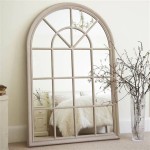Spray Painting Side Mirrors
Side mirrors, constantly exposed to the elements, are prone to damage ranging from minor scratches and chips to more significant cracks and fading. Replacing them can be costly. Spray painting offers a cost-effective solution for restoring their appearance and protecting them from further wear and tear. This process, when performed correctly, can yield professional-looking results.
Before embarking on the project, gather the necessary materials. These include the chosen spray paint specifically designed for automotive use, primer designed for plastic adhesion if the mirror housing is plastic, clear coat for protection and shine, masking tape, masking paper or plastic sheeting, fine-grit sandpaper (e.g., 320-grit and 400-grit), rubbing compound, polishing compound, a tack cloth, and safety equipment such as gloves and a respirator.
Preparation is crucial for a smooth, even finish. Thoroughly clean the side mirrors with soap and water, removing any dirt, grime, or wax residue. Once dry, carefully inspect the surface for imperfections. Minor scratches or chips can be addressed with fine-grit sandpaper. Start with the coarser grit (320-grit) and progressively move to the finer grit (400-grit) to smooth the surface. For deeper damage, a body filler might be necessary.
Masking is the next essential step. This protects the surrounding areas of the vehicle from overspray. Carefully cover the adjacent body panels, windows, and any trim with masking tape and paper or plastic sheeting. Ensure a tight seal to prevent paint from seeping underneath.
If the mirror housing is made of plastic, applying a primer specifically designed for plastic is recommended. This promotes better adhesion of the paint. Apply the primer in thin, even coats, allowing each coat to dry completely before applying the next. Follow the manufacturer's instructions for drying times.
Once the primer is dry, apply the chosen color coat. Shake the can vigorously for the recommended time as per the manufacturer's instructions. Hold the can at a consistent distance from the mirror surface, typically around 8-10 inches. Apply thin, even coats, overlapping each pass slightly to avoid uneven coverage. Multiple thin coats are preferable to a single thick coat, which is more prone to runs and drips. Allow each coat to dry completely before applying the next.
After the color coats have dried, the clear coat is applied. This protective layer provides a glossy finish and shields the paint from UV rays, environmental contaminants, and minor abrasions. Apply the clear coat in the same manner as the color coat, using thin, even coats and allowing ample drying time between each application.
Once the clear coat is thoroughly dry, imperfections such as orange peel or minor dust particles can be addressed with wet sanding. Use very fine-grit sandpaper (e.g., 2000-grit) and water to lightly sand the surface. This process requires patience and a gentle touch to avoid sanding through the clear coat. Follow this with rubbing compound and a polishing compound to restore the shine.
Before reassembling the mirrors, carefully remove the masking tape and paper. It's best to remove the masking while the paint is still slightly soft to prevent pulling up any of the fresh paint. Once the masking is removed, inspect the edges for any overspray and touch up if necessary.
Different types of spray paint are available, including acrylic lacquer, acrylic enamel, and urethane. Acrylic lacquer dries quickly and is easy to apply, but it's less durable than other options. Acrylic enamel offers good durability and color retention. Urethane provides superior durability and resistance to chipping and fading, making it a popular choice for automotive applications.
Environmental conditions play a significant role in the success of spray painting. Ideally, work in a well-ventilated area with a stable temperature and low humidity. Excessive heat can cause the paint to dry too quickly, resulting in a rough finish. High humidity can trap moisture under the paint, leading to bubbling or peeling.
Regular maintenance can prolong the life of the newly painted side mirrors. Washing them regularly with a mild car wash soap and drying them thoroughly can prevent dirt and grime buildup. Applying a coat of wax every few months can provide additional protection and maintain the shine.

Spray Painting The Integra Mirrors Black

Repaint Side Mirror With Spray Paint

Respraying A Car Wing Mirror

Respraying A Car Wing Mirror

How To Paint Your Car S Plastic Side Mirror

How To Paint Plastic Side Mirrors With Spray Cans Dupli Color And Rustoleum

How To Spray Paint A Mirror Step By Guide

Diy Mirror Effect How To Do Aged Tutorial Old Maple Home

How To Spray Paint A Mirror

How To Paint A Side View Mirror It Still Runs








